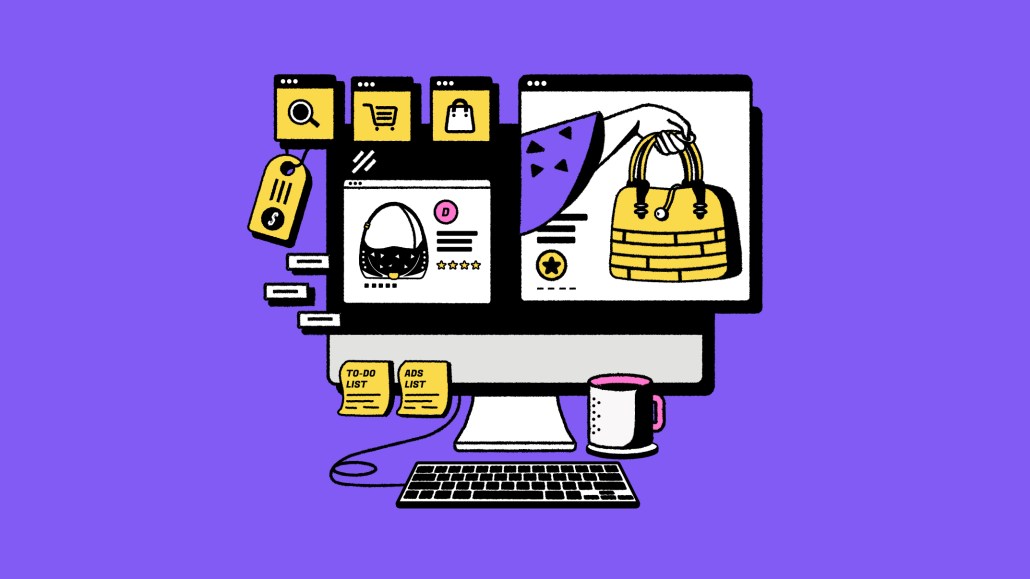As more people turn to online shopping, legacy retailer Bed, Bath & Beyond leans into omni-channel digital strategy

Bed, Bath & Beyond is overhauling its digital strategy to attract new customers and keep up with the increase of online shopping ushered in by the coronavirus crisis.
The digital-first overhaul includes a website revamp where online shoppers are now offered options to buy online, pick up in store, curbside pickup and same-day delivery. While the initiative was included in the 50-year-old retailer’s recently announced three-year transformation plan, the pandemic and people’s shift to online shopping accelerated the process, said chief brand officer and executive vice president Cindy Davis.
Were it not for the pandemic changing how people shop, Bed, Bath & Beyond and other legacy retailers may have found themselves falling behind, said Carla Guy, chief strategy officer at Atlanta-based creative agency Dagger.
“It caused them to, in some situations, to take a very harsh look at how their business was performing,” Guy said. “Or how their business was starting to fall because of the pandemic and what [they had to] do to reinvigorate sales.”
Earlier this month, New Jersey-based Bed, Bath & Beyond rolled out its “Home, Happier” campaign, complete with digital promotion, paid media and broadcast and CTV spots. According to Davis, the retailer has plans to explore TikTok for the first time in an effort to target a younger customer base and keep a finger on the pulse of changing consumer habits.
Even as vaccine rollout continues and normal life tantalizingly shimmers on the horizon, they’re “never going back” to how they used to market and story tell in service of the brand, said Davis, who added the big box retailer significantly increased its digital budget last year, according to Davis.
According to Kantar Media, Bed, Bath & Beyond media spend was $12.6 million in 2020.
Although Davis declined to share specifics on the increased digital budget, she did say the brand gained approximately 11 million new online customers, an increase of 95% over last year. The executive also said Bed, Bath & Beyond’s sales late last year were “driven by strong digital growth of 86%.”
Those changes to digital panned out to be a critical move that afforded Bed, Bath & Beyond “the opportunity to capture some of the digital growth that happened as customers couldn’t get to our stores or didn’t feel comfortable going into stores.”
Like many other retailers, Bed, Bath & Beyond temporarily closed brick and mortar stores when the pandemic hit, leaving it in what Davis calls uncharted territory as it pivoted to a digital-first approach. “[We] did not really have the omni-channel services that we needed to be able to serve customers in the midst of this pandemic,” Davis said. “It caused us to accelerate.”
Bed, Bath & Beyond’s digital revamp is part of a broader brand turnaround initiative led by president and CEO Mark Tritton, who stepped into the role in late 2019 after former CEO Steven Temares left the company.
“The company had not really done the work to understand who our customers are, where we have new growth opportunity and what new customers we need to attract,” Davis said.
Per Davis, Bed, Bath & Beyond “went from having zero stores having omni service to all our stores having omni service.” And in response to the pandemic, the retailer expanded its fulfilment capabilities to move from being a multi-channel retailer to an omni-channel retailer, Davis said. In addition to buy online, pick up in store and other services, the brand worked to ship online orders in two days or less and make orders available for pickup in less than two hours — services that weren’t available prior to the pandemic are now available at all retail locations.
That being said, even post-pandemic as people venture outside, digital-first strategies will still be the key to any marketers strategy as “digital is continuing to be looked to to really drive revenue because of its powerful targeting capabilities,” Guy said.
Brands that have pushed forward to provide digital convenience, like curbside pickup and same-day delivery, are the ones that are seeing successes coming out of the pandemic faster, Guy said.
More in Marketing

Pitch deck: How Amazon is recasting Twitch as a core part of its CTV pitch
Amazon is positioning Twitch as a defining asset in its CTV ambitions.

Netflix transforms former mall department stores into experiential venues
The location in Dallas opens this week, and one at the King of Prussia mall near Philadelphia opened last month.

Future of Marketing Briefing: AI has created a new talent paradox in programmatic agencies
The job isn’t execution anymore. AI handles that. The job is judgement.








